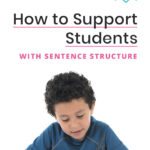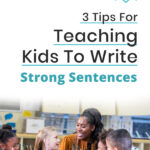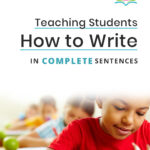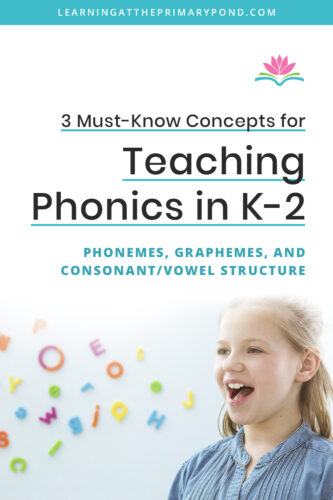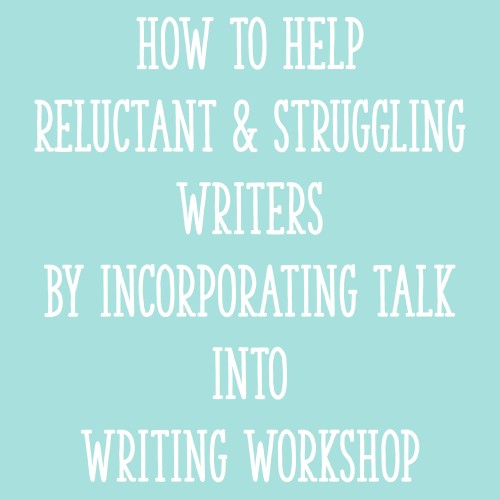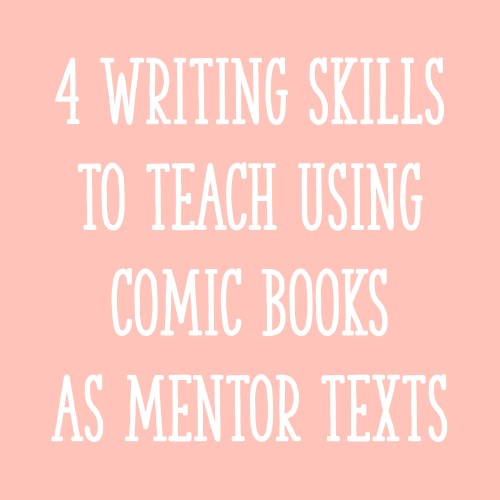Have you worked with students who struggle to write sentences? They may have trouble bridging oral language to written language. Some students write either in incomplete or run-on sentences. Others may use incorrect punctuation, or forget it altogether! Fortunately, we can use scaffolds like a sentence frame to help them learn to write sentences correctly.
Some (but not all) children who have been hearing and speaking English for years are usually developing some sort of “innate” understanding of what correct sentence structure sounds like. It can be difficult, though, for students to translate oral to written language. In oral language, incomplete sentences and run-on sentences are common and accepted, even though this is not the case in written language. So when we ask students to express themselves in writing, it’s a whole new set of rules that they need to learn.
This is why explicit instruction in grammar and sentence structure is so important: it helps kids learn to write in complete, correct sentences. It can also help kids learn how to expand their sentences to write with more detail. Sentence frames are the perfect tool to support students with all of this. (All of the materials discussed in this post are from my Supported Sentence Writing Worksheets Bundle for K-2.)
In this blog, I’ll explain what a sentence frame is. I’ll also provide some examples of when you can use sentence frames in your Kindergarten, first grade, or second grade classroom!
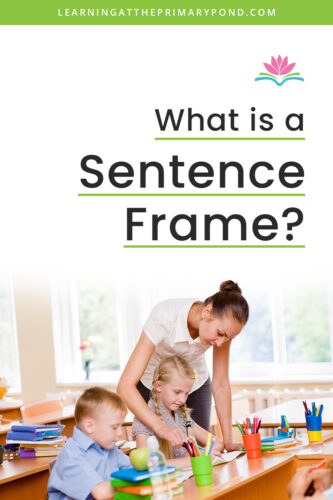
What is a Sentence Frame?
A sentence frame is a way to support sentence writing. It provides the framework for what a correct sentence looks and sounds like. Here is an example from my Supported Sentence Writing Worksheets for First Grade:

On each sheet, a specific sentence structure is repeated so that students internalize it. Sentence frames allow for the gradual release model:
- The first sentence is a model sentence – it has a capital letter to start, correct grammar and word choice, and ends with punctuation. Students read and trace this model sentence to help them internalize it.
- The next couple of sentences are gradually having students do more and more independently, but still with some supports. In the second sentence, students are expected to fill in the last word. They look at the picture to identify what the missing word is – in this case “We like to run.”
- In the third sentence, students fill in everything but the first word. At this point, they are also adding in the punctuation. “We like to dig.“
- Finally, full responsibility is released to students in the last sentence – students are expected to write the entire sentence independently. “We like to sit.“
The purpose of this model is so that students experience success by focusing on one component of the sentence at a time. This was a very simple example, but you can use much more complex frames as well (see examples later on in this blog post).
When you’re first using these sentence frames with students, make sure you fully model how to complete every item on the sheet. Over time, students will be able to complete the sheets independently.
How Can I Use Sentence Frames?
At the very beginning of the school year, I actually don’t use sentence frames. I start out showing kids how to write in complete sentences, and I encourage them to create their own sentences as they write.
What I don’t want to happen is for students to become dependent upon sentence frames. I don’t want them to get the idea that they can’t do this on their own, because that’s not true! I want them to build confidence and the knowledge that they can write in complete sentences.
However, once I see that my students are comfortable writing at least some sentences (which doesn’t happen until a bit later on in the year for Kindergarten), I then start using sentence frames as a tool to help them refine their sentences. It might seem like taking a step back, but in reality, this step back is necessary so that students learn to write correct sentences.
Each resource in my Supported Sentence Writing Worksheets Bundle for K-2 comes with a table of contents and answer key. This makes it easy for teachers to quickly check student work. It also allows teachers to pick and choose which type of sentences to work on. Here’s one table of contents/answer key page from the Supported Sentence Writing Worksheets for Kindergarten:

The focus is written at the top of each box. In the K-2 Bundle, the skills covered include:
- complete sentences, exclamations, and commands
- writing questions (including questions beginning with “who,” “what,” “where,” “when,” “why,” “how”)
- capitalizing “I” and names
- prepositions
- commas in a list
- singular and plural nouns, common and proper nouns, possessive nouns, personal pronouns, possessive pronouns, reflexive pronouns
- verbs, verbs with “-s”, adjectives, and adverbs
- joining nouns with “and”/”or”, combining sentences
- subject-verb agreement, regular/irregular past and present tense verbs, present and future tense verbs
- a/an practice
The sheets can be done in any order, or matched to your language/grammar program skills. Generally speaking, though, easier skills are covered earlier on in the sequence. Here are a few more examples:



Conclusion
I hope this information about sentence frames was helpful! If you’re looking for some more information on how to help students write in complete sentences, check out these other blogs:
Happy teaching!

